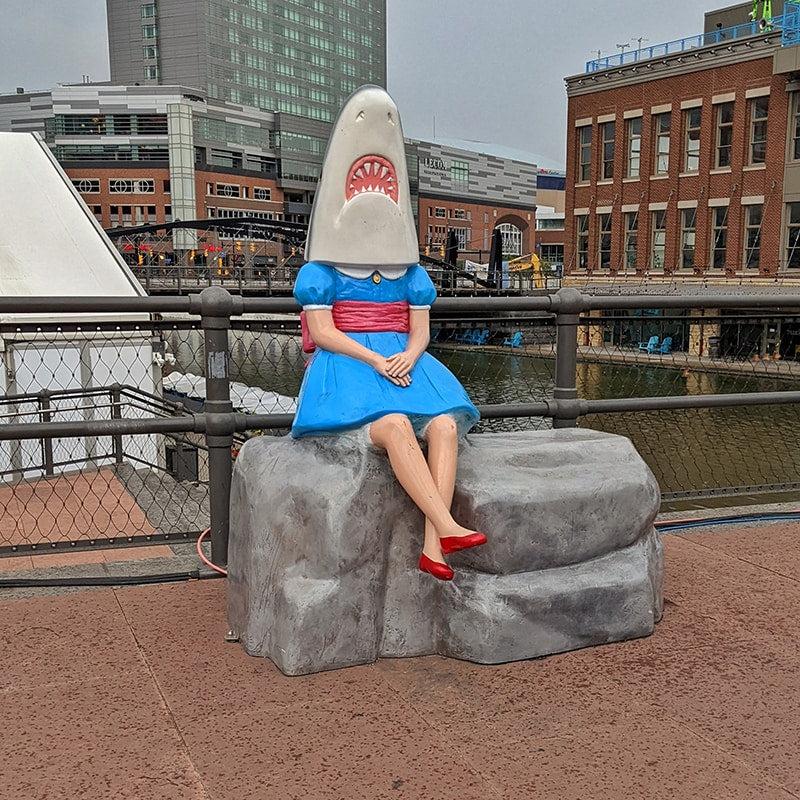Day Three: “Steel City, Oil City, Silo City”
Good morning! It’s the last day of the Rust Belt Ramble. This is the day of mixed emotions. On one hand, you’re glad today is the final day of the rally, as you’re getting mentally exhausted from all the navigating. But on the other hand, you’ll miss the exploring, the driving, and all of the friends you’ve spent time with.
Little did I know that I would stumble across a part of Detroit history near the very end of the rally.
The first checkpoint summoned us to Butler, Pennsylvania to find a historical plaque that marked the invention of the Jeep. The day’s “Find It” mystery was to find another historical marker for an eccentric Hall of Fame baseball pitcher who chased fire trucks during games, wrestled alligators, and grew up north of Pittsburgh. Located at the entrance to a school parking lot, I found this plaque for American League pitcher George “Rube” Waddell in Prospect, PA.
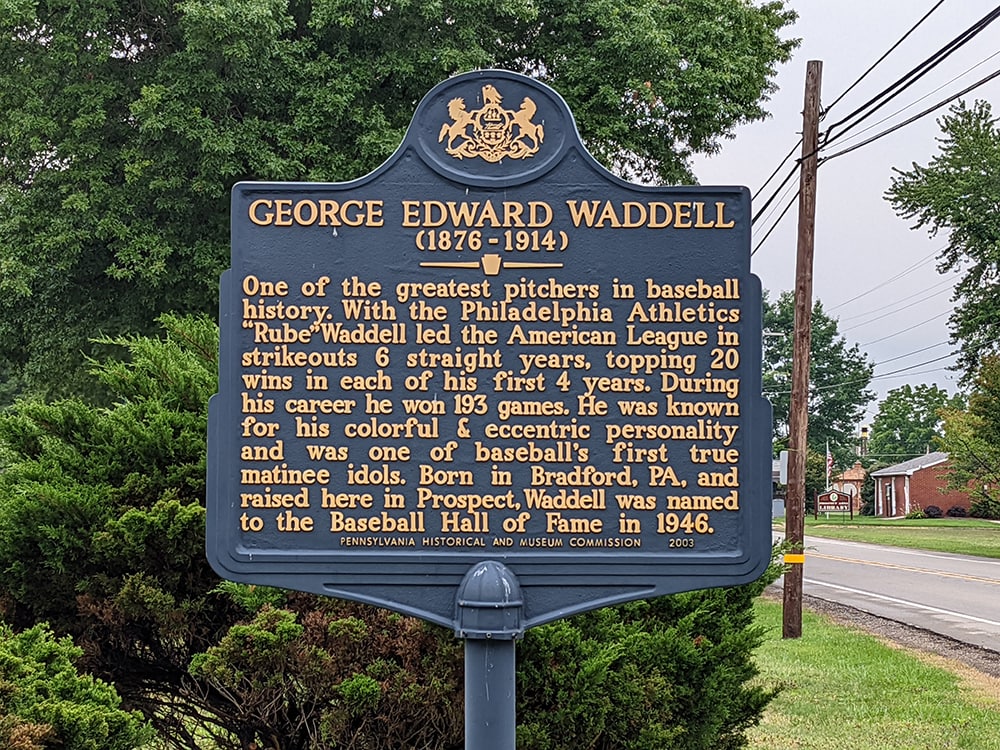
Historic marker for George “Rube” Waddell.
Following that, our next checkpoint was to find Pithole City. The “city” no longer exists, but Pithole City was a boomtown that rose up briefly around the activity of oil prospectors. Oil was struck nearby and as many as 15,000 people came to the hillside to strike it rich. But as the price of oil dropped and the suspected “ocean” of oil turned out to be nothing more than a puddle, everyone left town and the buildings were scrapped. A few remnants were left behind, and a visitors center and museum was eventually built at the top of the hill.
The pithole, by the way, was a crack in the ground that emitted a strange odor, which people of the day thought was a portal to Hell. The crack still exists but is located on private property.

A remnant of Pithole City.
This occasionally underwater bridge near Tionesta, PA, was our next checkpoint. The Nebraska Bridge was built over Tionesta Creek. Due to a nearby dam, the deck of the bridge is often well underwater, making it a seasonal bridge. At the time of the rally, the water level was but a couple of feet away from the bottom of the bridge.
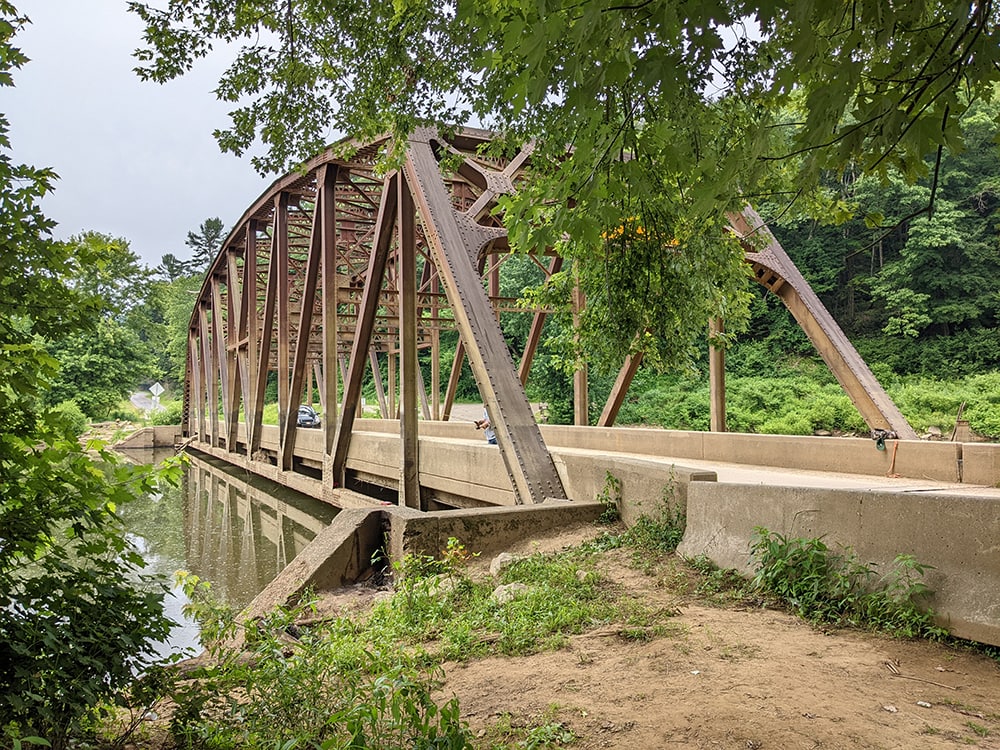
The Nebraska Bridge.
The next section of the day in our rally book was entitled “Get your kicks on…” as we turned onto Pennsylvania’s Route 666. After locating the town of Endeavor, our next checkpoint would be a disappointing modern bridge along Blue Jay Creek Road. I had looked it up the previous night and found that the historic bridge, known as the Lynch Bridge and built in 1905, was replaced in 2019 with the current bridge. After a stop at the Shaw House in Sheffield, PA to complete our Route 666 checkpoints, we headed north on US 6 and US 62 to locate the marker for the 42nd Parallel, also known as the New York/Pennsylvania state line.
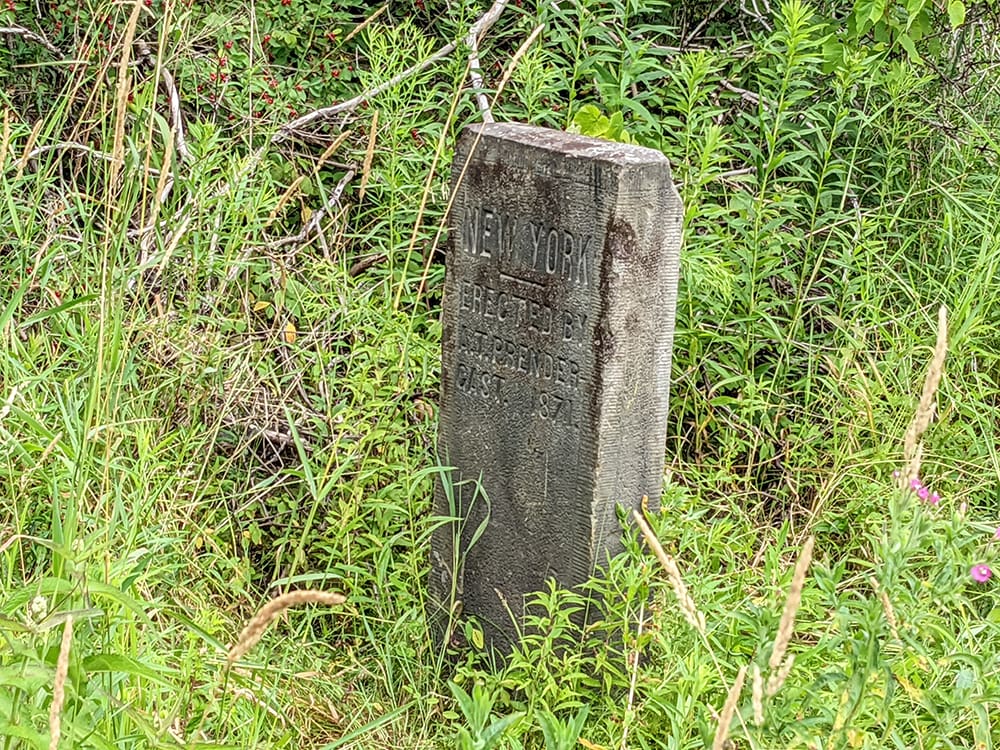
Marker for the 42nd Parallel.
Our first New York destination was Jamestown, where we had to locate the historic Jamestown Furniture Exposition building. A database for historical markers sent most of us to the wrong location a few blocks away, but the building wound up being visible from the street we parked on. I managed to find my way over to it through the streets of downtown Jamestown, but not before coming across an amusing mural painted on the side of a parking structure.
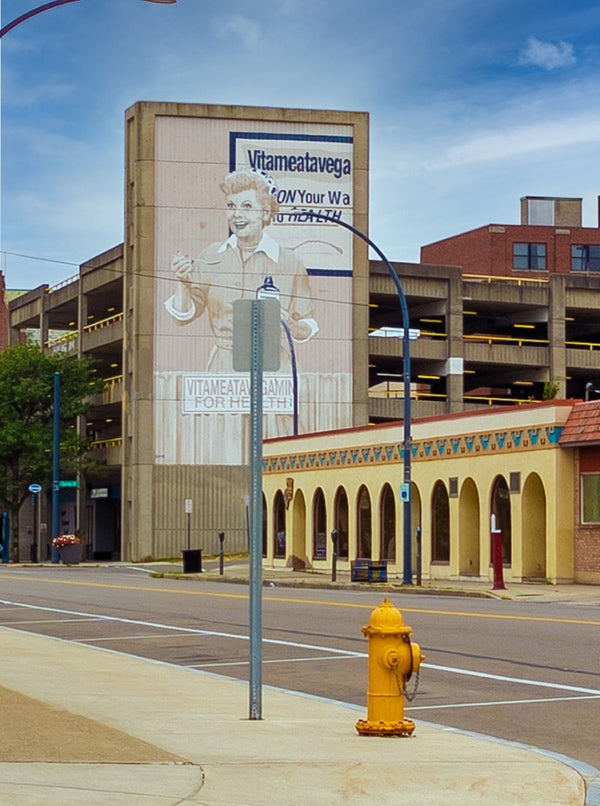
“Lucy! I’m home!”
I am not one to follow celebrities or their backgrounds, but as I’m sure many of you already know, Jamestown is the birthplace of comedienne Lucille Ball, and the Lucille Ball/Desi Arnaz Museum is located here. And not too far away, my destination – the Jamestown Furniture Exposition Building.
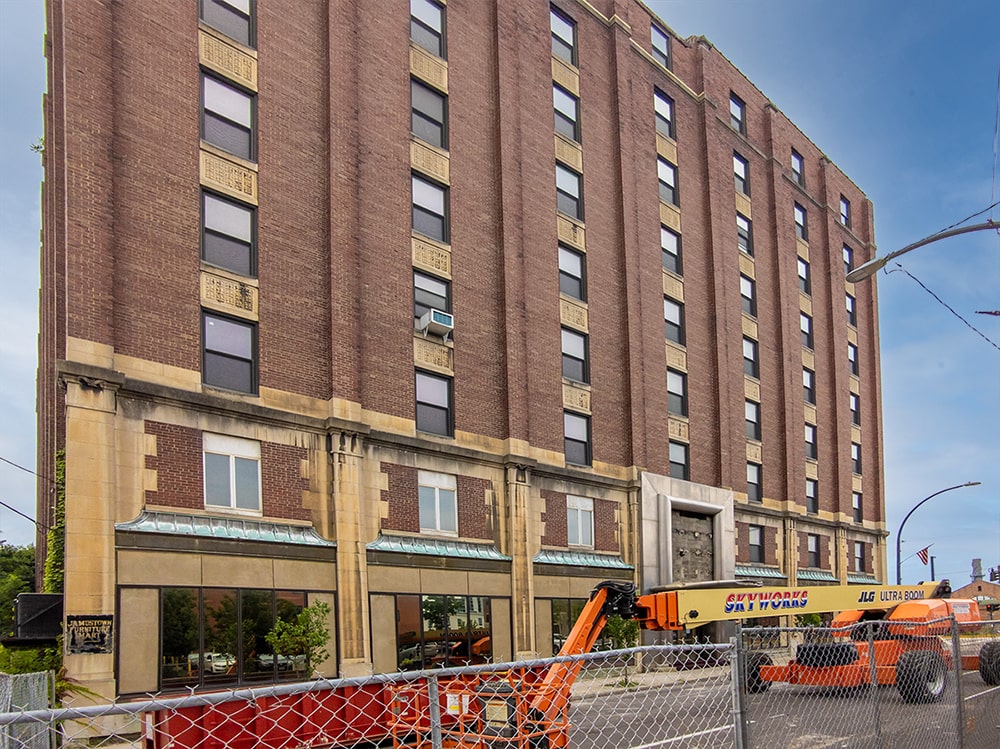
The Jamestown Furniture Exposition Building.
We departed Jamestown to seek out the location of the first national gas well in the USA, which was denoted by a marker located in Fredonia, NY. In 1821, William Hart dug a well at this location, and the Fredonia Gas Light Company was the first company in the country to distribute natural gas.
Our next checkpoint in Silver Creek, New York was a skew arch, which is a part of a bridge which crosses the obstruction beneath it at an angle.

Skew arch at Silver Creek, New York.
This is the point in the rally where you realize you’re almost done! Our final three checkpoints, and the finish line, were located in Buffalo. A few of us stopped at a park adjacent to the skew arch to take in the views of Lake Erie, and then shuffled off to Buffalo.
It was this next stop that sent me headfirst into an encounter of a piece of Detroit/Windsor history. Silo City is a campus of grain silos located strategically on the Buffalo River and near the railroad. Now unused, the area is being redeveloped as a destination for tours and events, and a pub, Duende, is operating out of a former office building on the site. Here is one of the silo buildings on the property. Behind the lower left corner of this silo building and stairways was my confirmation of what I had seen from a nearby bridge.

Silo City.
To back up a few moments, I spotted this from a bridge as I approached Silo City. I was thinking to myself, “What are the chances?” After my visit to the silos, I returned to the bridge and grabbed this picture through a chain link fence. (Sorry it’s a bit grainy – one might say I was not quite legally parked on the bridge!)

The SS Columbia.
That steamship behind the silos is the SS Columbia. One never forgets a familiar face…or I should say, a familiar bow and stern! I was able to read the stern tucked behind the building pictured above and confirmed it was the Columbia.
This steamship and its sister, the SS Ste. Claire, traveled daily up and down the Detroit River until the early 1990s. In the middle of the Detroit River was Bob-Lo Island (formally Bois Blanc Island), a Canadian amusement park reachable only by watercraft. The Ste. Claire (launched 1910) and Columbia (launched 1902) made daily excursions to and from the dock in Detroit, an 18-mile, 90-minute boat ride each way. The boats were also available for evening cruises, featuring food, drink, and live bands. Ferries also reached the island from Amherstburg, Ontario and Gibraltar, Michigan.
With the Cedar Point amusement park located 120 miles from Detroit, attendance dwindled and Bob-Lo Island stopped running its steamships in 1991. In 1992, they were both declared US National Historic Landmarks. By 1993 the amusement park had shut down, and the island was partially redeveloped for residential use.
The ships were docked in Ecorse, Michigan at the Great Lakes Steel facility after they were retired, and left exposed to the elements. In 2004, the ships were finally shrink-wrapped to help prevent further damage and rot. 2006 saw the Columbia transferred to a New York-based non-profit group for eventual use on the Hudson River. Since arriving in Buffalo, the SS Columbia has been moored in the river behind Silo City.
The Ste. Claire fared worse, suffering a fire from a wayward welding spark in 2018 that destroyed its wooden mahogany upper decks. The steel framework and hull of the ship remain intact, but little progress has been made in raising the funds for its continued restoration. The ship remains moored on the Rouge River near the Dix Highway bridge.
Bob-Lo Island itself is part of local history as well. Due to its location, and how it was accessed from both Canada and the US, anyone who visited the island did not have to go through Customs. For people who wanted to travel between the two countries, either illegally or to avoid being drafted (especially for the Vietnam War), they arrived as “visitors” to the island, and swapped their return tickets with others who were looking to travel in the opposite direction. This allowed them to skirt their way around the US/Canada border crossings undetected.
Back to the rally! Our final two checkpoints were to locate the convergence of the three Olmsted parkways, meaning we had to find Soldier’s Circle. The final checkpoint was to find Shark Girl (see this article’s header image), who was located across the street from the Pearl Street Grill & Brewery, our finish line and the location of the awards ceremony.
#GodforsakenRallyIsOver
We all piled into the lower level of the Pearl Street Grill and awaited the final point tallies for the rally. This was the first rally since early 2020 to include Canadians, as the borders had finally opened enough for the Canadian teams to join us. Two of the awarded teams were from Canada (Canucks on the Loose, and Team Smurf).
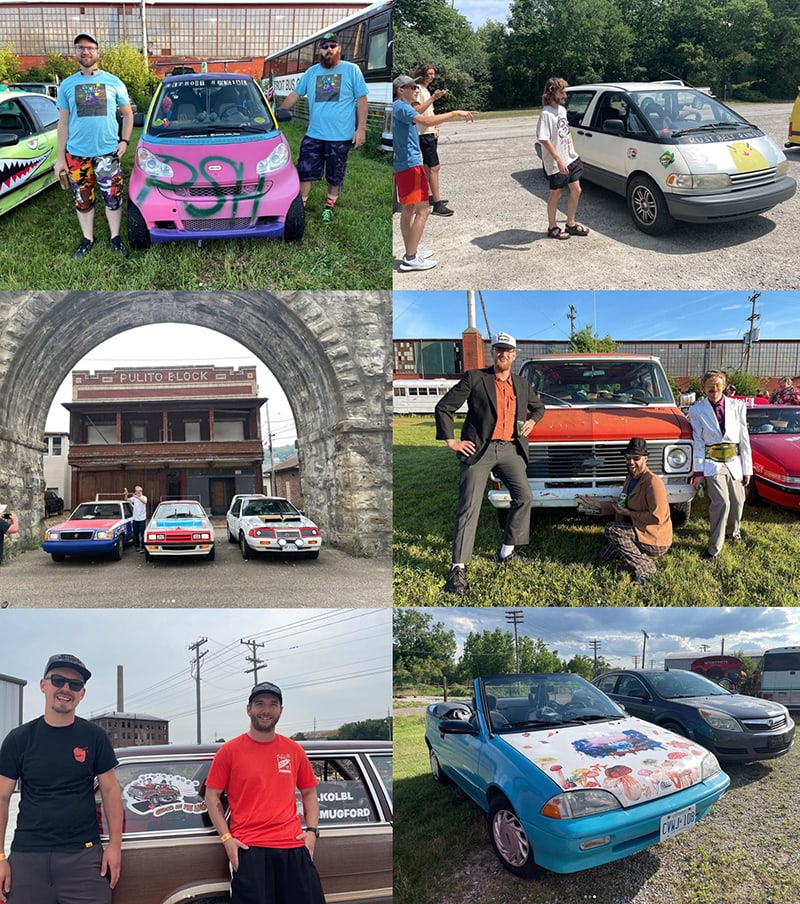
First row, left to right (photo above):
First Place: Lemons Little Yikes, Smart ForTwo
Second Place: The Egg Beaters, Toyota Previa
Second row, left to right:
Third Place: (tie, L to R) Nice Reliant Automobile (Plymouth Reliant), Escape From Buffalo (Plymouth Turismo), Scrapyard Refugees (Plymouth Acclaim)
Random Acts of Stupidity: Smokey and the Vandits, Chevy G20
Third row, left to right:
Judges Choice: Canucks on the Loose, Ford Fairmont
Organizer’s Choice: Team Smurf Car, Geo Metro
My future rally plans?
Two rallies remain for 2022. First is the Fall Fail-iage Tour, which circles from Boston to Albany, NY, Burlington, Vermont, and back to Boston. The last, in November, is the Great River Road Rally, a five-day slog up the Mississippi River from New Orleans to St. Paul, Minnesota. Time and funds permitting, I may decide to take part in the latter rally, as I would again be traveling a route I have never experienced before. The oldest running car in the hooptie fleet needs a redemption tour, and this might be the opportunity I’ve been looking for.

